#Medical simulation
Text
youtube
#youtube#militarytraining#Balikatan#Military readiness#Tactical Combat Casualty Care#Practical Application#Field training#Combat scenarios#Emergency response#First aid training#Medical simulation#Combat medicine#Military training#Combat tactics#Military operations#Military drills#Military personnel#Military exercise#Tactical training#Combat training#Tactical skills#B-Roll
1 note
·
View note
Text
How Medical Simulation is Revolutionizing Healthcare Education
Medical simulation has emerged as a game-changer in healthcare education in recent years. It's a tool that uses advanced technology to create realistic clinical scenarios, offering a hands-on learning experience for students and professionals. This innovative approach not only transforms how knowledge is imparted but also enhances the skills of healthcare providers.
Let’s delve into how medical simulation courses are reshaping the landscape of medical education.
What Is Medical Simulation
Medical simulation mimics real-life medical emergencies and routine procedures, allowing healthcare professionals and students to practice and hone their skills in a safe, controlled environment. This training method can cover many scenarios, from basic tasks like drawing blood to complex surgical procedures.
By engaging in simulation training, healthcare professionals can improve their decision-making abilities, technical skills, and bedside manner without the risk of harm to real patients.
Advantages of Medical Simulation
Enhanced Learning Experience: Medical simulation offers an immersive learning experience. Participants can interact with lifelike mannequins and utilize actual medical instruments under simulated conditions. This hands-on approach helps them retain information better than traditional lecture-based learning.
Safe Environment for Practice: One of the most significant benefits of simulation training is the opportunity to make mistakes and learn from them in a risk-free environment. Healthcare professionals can practice procedures repeatedly until they gain confidence and proficiency, which can significantly reduce the likelihood of errors in real-life medical situations.
Interprofessional Education: Medical simulation allows for training healthcare teams, fostering better communication and teamwork among different healthcare disciplines. This team-based approach is crucial in real-world healthcare settings, where effective collaboration can be the difference between life and death.
Feedback and Evaluation: Simulation training for healthcare professionals often includes debriefing sessions, during which participants can receive immediate feedback on their performance. This feedback is vital for self-assessment and improvement, providing a clear path for professional development.
Implementation of Medical Simulation Courses
Medical simulation courses are now a staple in many healthcare education programs. These courses complement traditional learning by offering practical experience focusing on patient safety, ethical considerations, and effective communication.
Educational institutions and healthcare facilities invest in state-of-the-art simulation labs with the latest technology to provide realistic scenarios ranging from emergency room settings to operating theaters.
The Future of Healthcare Education
The use of medical simulation in healthcare education is expected to grow exponentially. Advancements in technology, such as virtual reality (VR) and augmented reality (AR), are opening new avenues for even more immersive simulation experiences.
These technologies can simulate complex surgical procedures and rare medical conditions, providing invaluable learning opportunities that were previously impossible or highly impractical.
Challenges and Considerations
While the benefits of medical simulation are clear, there are challenges to its widespread adoption. The initial setup cost for simulation centers can be high, requiring significant investment in technology, equipment, and educator training. Developing realistic and comprehensive simulation scenarios that cover the vast spectrum of medical conditions and emergencies is an ongoing challenge.
However, the return on investment in improved patient outcomes, reduced medical errors, and enhanced teamwork and communication skills among healthcare professionals is immeasurable. As such, integrating medical simulation into healthcare education programs continues to be a priority for institutions worldwide.
Conclusion
Medical simulation represents a significant leap forward in healthcare education. Through simulation training for healthcare professionals, learners are equipped with the skills and confidence needed to excel in their field. Medical simulation is revolutionizing healthcare education and paving the way for safer, more effective patient care by providing a safe, realistic platform for practice.
As technology advances, we can expect medical simulation to become even more integral to healthcare training, further enhancing the quality of care provided to patients around the globe.
1 note
·
View note
Text
youtube
Today virtual reality in healthcare is on a rapid rise, and many well-known companies are using it in a novel way to improve the healthcare system all around the world. In this video, we'll explore the potential of virtual reality (VR) in healthcare as a new approach to healing. Let's deep dive into the video and learn more about how it can be used to improve mental health awareness and patient care.
Virtual Reality (VR) technology has rapidly evolved from its origins in the entertainment and gaming industries to find promising applications in various sectors, with healthcare being one of the most compelling and transformative areas of implementation. In healthcare, VR offers a wide range of opportunities to enhance medical procedures, training, therapy, patient education, and research.
Virtual Reality provides a safe and controlled environment for medical students and professionals to practice surgical procedures and other medical interventions. Surgical simulators in VR allow trainees to develop their skills, refine techniques, and gain confidence before operating on real patients. This reduces the risk associated with traditional hands-on training methods and helps improve the overall quality of healthcare professionals.
VR is being used effectively in exposure therapy to treat various mental health conditions, such as phobias, post-traumatic stress disorder (PTSD), and anxiety disorders. Patients can be gradually exposed to triggering situations in a controlled virtual environment, allowing them to confront their fears and anxieties in a safe and monitored setting. This approach can accelerate the therapeutic process and improve outcomes.
VR can aid in patient education by visualizing complex medical concepts and procedures in a more understandable manner. Patients can explore interactive 3D models of their own anatomy, enabling them to better understand their conditions and treatment options. This enhanced understanding empowers patients to make informed decisions about their health and treatment plans.
VR technology has the potential to revolutionize telemedicine by providing a more immersive and personal experience for remote consultations. Patients and healthcare providers can meet in virtual environments that simulate physical consultation rooms, making telehealth interactions feel more authentic and enhancing the doctor-patient relationship.
While the potential of VR in healthcare is vast, several challenges remain, including the cost of VR hardware and software, concerns about data privacy and security, and the need for standardized protocols and guidelines for its various applications. However, ongoing technological advancements, decreasing costs, and growing interest from healthcare professionals indicate a promising future for the integration of VR into mainstream medical practices, ultimately leading to improved patient outcomes and experiences.
Virtual Reality (VR) in Healthcare: A New Approach to Healing
#virtual reality in healthcare#virtual reality in healthcare a new approach to healing#vr in healthcare#virtual reality#medicine#virtual reality in healthcare simulation#vr simulaton#future of vr in healthcare#LimitLess Tech 888#what is virtual reality#healthcare#vr is revolutionizing healthcare#virtual reality in medicine#virtual reality for medical training#vr in medicine#medical simulation#benefits of virtual reality in healthcare#Youtube
1 note
·
View note
Text
youtube
Today virtual reality in healthcare is on a rapid rise, and many well-known companies are using it in a novel way to improve the healthcare system all around the world. In this video, we'll explore the potential of virtual reality (VR) in healthcare as a new approach to healing. Let's deep dive into the video and learn more about how it can be used to improve mental health awareness and patient care.
Virtual Reality (VR) technology has rapidly evolved from its origins in the entertainment and gaming industries to find promising applications in various sectors, with healthcare being one of the most compelling and transformative areas of implementation. In healthcare, VR offers a wide range of opportunities to enhance medical procedures, training, therapy, patient education, and research.
Virtual Reality provides a safe and controlled environment for medical students and professionals to practice surgical procedures and other medical interventions. Surgical simulators in VR allow trainees to develop their skills, refine techniques, and gain confidence before operating on real patients. This reduces the risk associated with traditional hands-on training methods and helps improve the overall quality of healthcare professionals.
VR is being used effectively in exposure therapy to treat various mental health conditions, such as phobias, post-traumatic stress disorder (PTSD), and anxiety disorders. Patients can be gradually exposed to triggering situations in a controlled virtual environment, allowing them to confront their fears and anxieties in a safe and monitored setting. This approach can accelerate the therapeutic process and improve outcomes.
VR can aid in patient education by visualizing complex medical concepts and procedures in a more understandable manner. Patients can explore interactive 3D models of their own anatomy, enabling them to better understand their conditions and treatment options. This enhanced understanding empowers patients to make informed decisions about their health and treatment plans.
While the potential of VR in healthcare is vast, several challenges remain, including the cost of VR hardware and software, concerns about data privacy and security, and the need for standardized protocols and guidelines for its various applications. However, ongoing technological advancements, decreasing costs, and growing interest from healthcare professionals indicate a promising future for the integration of VR into mainstream medical practices, ultimately leading to improved patient outcomes and experiences.
Virtual Reality (VR) in Healthcare: A New Approach to Healing
#virtual reality in healthcare#virtual reality in healthcare a new approach to healing#vr in healthcare#virtual reality#vr#medicine#virtual reality in healthcare simulation#vr simulaton#future of vr in healthcare#LimitLess Tech 888#what is virtual reality#healthcare#vr is revolutionizing healthcare#virtual reality in medicine#virtual reality for medical training#vr in medicine#medical simulation#benefits of virtual reality in healthcare#vr technology in healthcare#Youtube
0 notes
Text
How Virtual Reality Transforming Health Care Industry?
How VR transformed Medicine
Virtual Reality (VR) isn’t just about gaming, virtual reality (VR) is a next-generation technology whose applications can revolutionize almost every industry. In healthcare technology, professionals and technologists are pushing boundaries every day, and practitioners are exploring exciting ways – Virtual reality in medicine can assist patients and health providers to achieve better treatments…
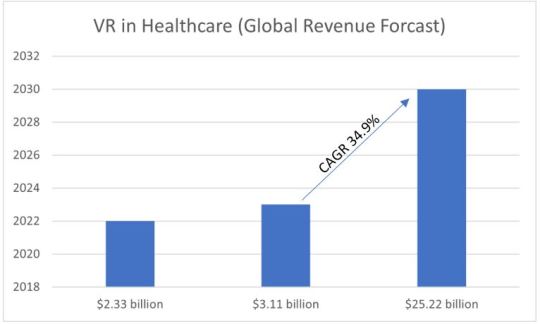
View On WordPress
#Anxiety#Body wellness#Depression#Digital Age#Doctors#Evolution of Virtual Reality#Future of Virtual Reality#Health care innovation#Health Tech#Healthcare Future#Healthcare Simulation#Healthcare Technology#Immersive Healthcare Solutions#Med Tech#Medical Simulation#Medical VR Solutions#Meditation#Mental Health#mental wellbeing#Mindfulness#Patient VR#Self care#stress#Telemedicine and VR#Telemedicine VR#Virtual Reality#Virtual Reality in Healthcare#Virtual Reality in Medicine#Virtual reality medicine#Virtual Reality Therapy
0 notes
Text
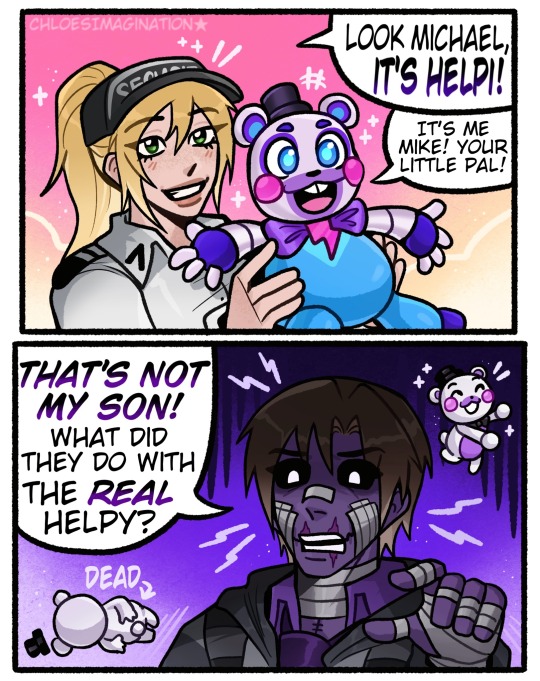
Will the real FNAF Helpy please stand up?..
#myart#chloesimagination#comic#michael afton#fnaf helpi#helpy#vannessa fnaf#fnaf vanny#fnaf#security breach#fnaf pizzeria simulator#fnaf fanart#five nights at freddy's#Helpi is not to be trusted and is an enemy to the state#that is not our dear baby boy Helpy#helpi is an imposter do not trust him 😤#I just know in my heart Michael would not trust helpi BAHA#HE KNOWS that’s not his son#I hope that little guy is okay cause last we saw of him he was sent to medical hell in HW2#praying for helpys safe return 🙏🏾 give back Michael’s son
5K notes
·
View notes
Link
At SEM Trainers and Systems, we understand the importance of hands-on training and realistic simulation experiences in healthcare education. That's why we are committed to providing our customers with the best possible products and solutions to meet their training needs.
Our team of experts has years of experience in the healthcare industry and is dedicated to providing exceptional customer service and support. We work closely with our clients to understand their specific training requirements and offer customized solutions to meet their unique needs.
0 notes
Text
Why is medical simulation training important?
Medical education has changed significantly in the last decades. One of the reasons behind the change is patient safety concerns, which have impacted the various medical accidents and malpractices that have occurred around the world.
https://publicationchannel.com/why-is-medical-simulation-training-important/
0 notes
Text
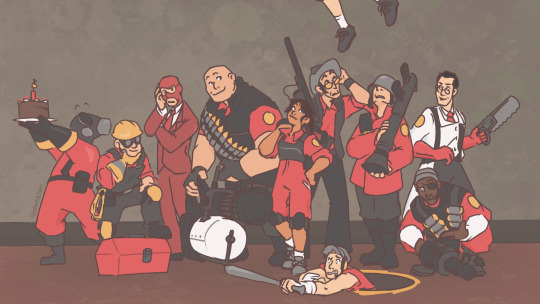
I can‘t believe I made this to motivate myself to actually work on an animatic… and now it‘s been over a year… 🫠
youtube
#okay tbF I MAy have started working on something… but these past couple of weeks I was kinda busy with zine stuff and crafting#team fortress 2#tf2#portal#chell portal#do I have to tag the whole gang??? I guess???#pyro tf2#engineer tf2#spy tf2#heavy tf2#sniper tf2#soldier tf2#medic tf2#demoman tf2#Youtube#portal hat simulator
228 notes
·
View notes
Text
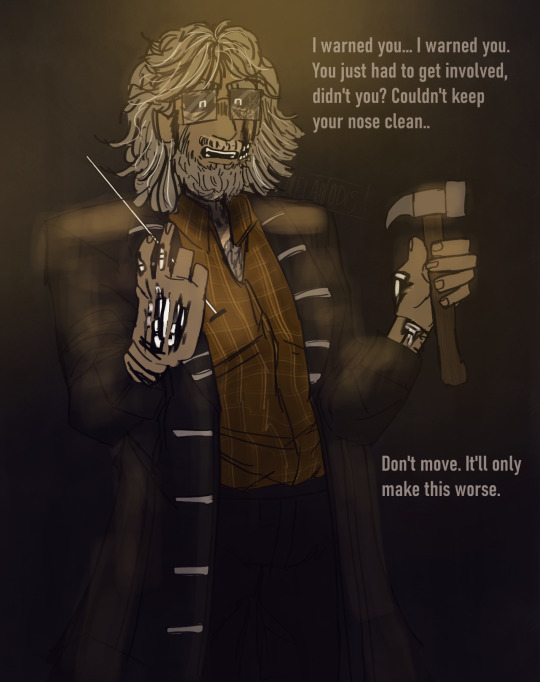

certificate of insanity
no text ver

#guuhuhhhhhhj#he is not having a good tim#henry emily#five nights at freddy's#ffps#fnaf 6#fnaf 6 pizza simulator#fnaf oc#merlot anderson#tw lobotomy#needles#medical trauma#art.psd#tw needles#tw syringe#ask to tag#eye trauma
111 notes
·
View notes
Text
CPR in hospitals
I did a post on doing cpr as a 'civilian' (i.e. in public with no equipment). But most people who follow me are writers! So here's how it goes down in hospital.
It varies on where someone is in hospital having a cardiac arrest, so this is just for if a patient is in a hospital bed with monitoring on.
The first sign is going to the monitor going crazy and the patient unconscious.
Step 1 - pull the emergency button and start chest compressions (they are still the most important thing!)
Step 2 - someone else will give rescue 'breaths' using an oxygen mask and bag (technically called a bag valve mask or BVM). Two breaths after every 30 compressions
Step 3 - someone else is cutting clothes off and putting defibrillator pads on. An anaesthetist may also intubate the patient and put them on a ventilator (this means you can do compressions continuously)
Step 4 - the defibrillator will scan the heart rhythm. If it's shockable (ventricular tachycardia or fibrillation) then everyone steps away while it shocks. As soon as it's safe, CPR continues (most defibrillators determine the rhythm and calculate voltage automatically)
Step 5 - if it's a non-shockable rhythm, give IV adrenaline ASAP
Step 6 - if it's a shockable rhythm, wait 2 minutes after first shock, check and shock again. Repeat a third time.
Step 7 - if the patient is still in cardiac arrest after 3 shocks, give IV adrenaline and amiodarone
Step 8 - continue CPR and give adrenaline every 5 minutes.
The person giving compressions should switch every 60 compressions (two cycles of 30) - the next person is counted in so there's no time without compressions
There are 10 main causes of cardiac arrest - while all of this is happening a team of doctors will be trying to work out the cause so they can treat it. I won't go into the causes because it's boring and technical.
CPR, defibrillation, and drugs will continue until the cardiac arrest stops or the patient is declared deceased.
If someone is in hospital because of hypothermia, remember! They're not dead until they're warm! (there have been cases of hypothermia patients being successfully resuscitated after over 5 hours of CPR!)
#cpr#cardiac arrest#tw medical#writing advice#I got to do this in a simulation with a defib and it was so cool
94 notes
·
View notes
Text

Haha... The Boys in Ec-4o.verse! (Reaper, Geno, and Dust!)
#utmv sans#utmv#utmv art#my art#spot!drawn#utmv au#ec 4o!reaper#ec 4o!geno#ec 4o!dust#dust sans#dust!sans#geno sans#geno!sans#reaper sans#reaper!sans#I decided that Geno needed a new outfit too lmao#he's using a standard Medic uniform (<- he doesn't have any medical knowledge-) but it keeps people from suspecting#that he's a Programmer#also Reaper doesn't use his Scythe to down bots anymore#it's his gloves to simulate his canon “Death Touch” that he can turn on and off#they give off an EMP that disables tech and doesn't harm people who are w/o tech prosthetics or made of tech#and Dust's “Paps” is no longer an implant but instead a chip that he wears around his neck like a pendant. He never takes it off#I love them so much#not tagging it as the ship because it's not shown here#but know that I'm thinking about it
20 notes
·
View notes
Text
How Virtual Reality is Revolutionising Medical Simulation
Training and education are critical to delivering the best patient care in healthcare. With advancements in technology, virtual reality (VR) has emerged as a game-changer, especially in medical simulation. This innovative tool reshapes how medical simulation courses and healthcare simulation training are conducted. In this blog, we'll explore how VR is making waves in the medical world, making training more effective and immersive.
A New Dimension in Learning
Imagine practising surgical procedures or diagnosing virtual patients in a controlled, risk-free setting. Virtual reality introduces an entirely new dimension to medical education. It allows healthcare professionals and students to immerse themselves in highly realistic, interactive environments. VR makes this possible, bridging the gap between theoretical knowledge and real-world application without putting actual patients at risk.
Enhanced Accessibility and Flexibility
One of the most significant advantages of using VR in medical simulation courses is its accessibility. Traditional training methods often require physical presence, specific times, and the availability of resources such as mannequins or equipment. VR, on the other hand, offers the flexibility to train anywhere and anytime. This accessibility is crucial for busy medical professionals and students, enabling them to fit training into their schedules more easily.
Realistic Scenarios for Better Preparedness
Healthcare simulation training through VR can simulate various medical scenarios, from common procedures to rare and complex conditions. This variety prepares learners for a broader spectrum of real-life situations. By practising in these simulated environments, medical professionals can enhance their decision-making skills, agility, and confidence, leading to better patient outcomes.
Personalised Learning Experiences
Another significant benefit of VR in medical education is the ability to personalise learning experiences. Unlike one-size-fits-all training methods, VR programs can be adjusted to match the learner's skill level and learning pace. This personalised approach ensures that each individual gets the most out of their training, focusing on areas where they need improvement and skipping over what they already know.
Immediate Feedback for Rapid Improvement
Virtual reality platforms often include built-in assessment tools that provide immediate feedback to learners. This instant feedback is invaluable for rapid improvement, allowing healthcare professionals and students to identify and correct mistakes in real time. Over time, this leads to a deeper understanding of procedures and better performance.
Reducing Costs Without Compromising Quality
Healthcare training is notoriously expensive, with costs associated with equipment, facilities, and instructors. VR can significantly reduce these costs by replacing physical resources with digital simulations. This cost-effectiveness does not come at the expense of quality. On the contrary, VR can enhance the quality of training by providing more diverse and intensive practice opportunities than traditional methods.
Promoting Collaboration and Teamwork
Healthcare is a team effort; VR simulation training can foster teamwork and communication skills among medical professionals. Virtual scenarios can be designed for multiple participants, allowing teams to practise and coordinate their efforts in a realistic setting. This collaborative approach to training is essential for developing the teamwork skills necessary for effective patient care.
The Future of Medical Training
Integrating VR into medical simulation courses and healthcare simulation training is just the beginning. As technology evolves, we can expect even more immersive and interactive experiences that further enhance the quality of healthcare education. The potential for VR in medical training is vast, with ongoing research and development aimed at unlocking new possibilities for learning and improvement in healthcare.
Conclusion
Virtual reality is revolutionising how medical professionals train and prepare for the challenges of patient care. By providing realistic, accessible, and flexible training options, VR is enhancing the skills and confidence of healthcare providers.
This revolution in medical simulation represents a significant step forward in our ongoing quest to improve patient care and outcomes. As VR technology advances, its role in medical education is set to grow, shaping the future of healthcare training for years to come.
0 notes
Text
Masquerade Medic (TDS)

24 notes
·
View notes
Text
i keep thinking, how much of a threat to anyone can ulixes really be? the only source for him being a twisted fucking cycle path is half light, and half light thinks everything is a threat
#posts by me#also at a few points ulixes makes some off-color remarks about war crimes. but like. we all have That leftist friend#it doesn't mean he has the ability to ever actually hurt anyone#idk i just look at him and think here is someone with some boyish fantasies abt how revolution goes. who is ultimately very harmless#exaggerating his threat potential is to me like looking at your buddy who makes some cringe stalin jokes#and saying oh my god this is literally the next jeffrey dahmer. or whatever#(hence why i'm so into the thought of his arc being that he sees violence up close and is immediately like oh god oh no#this is nothing like the simulations. and then he becomes a field medic)
13 notes
·
View notes
Text
pov cheerard
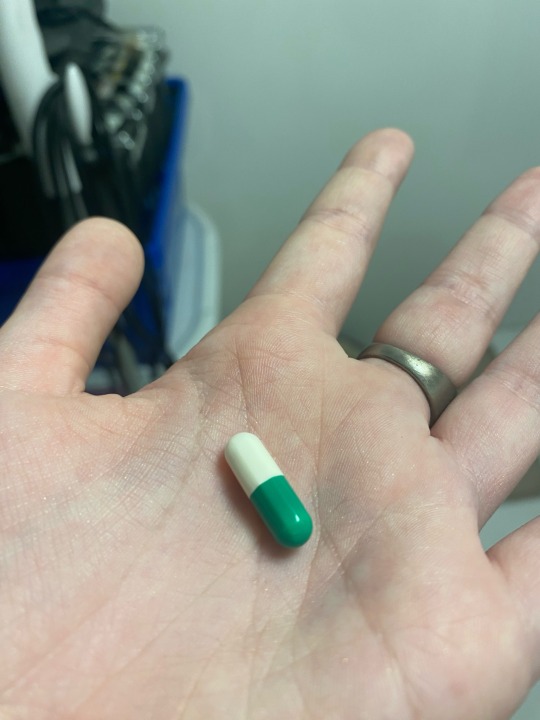
11 notes
·
View notes